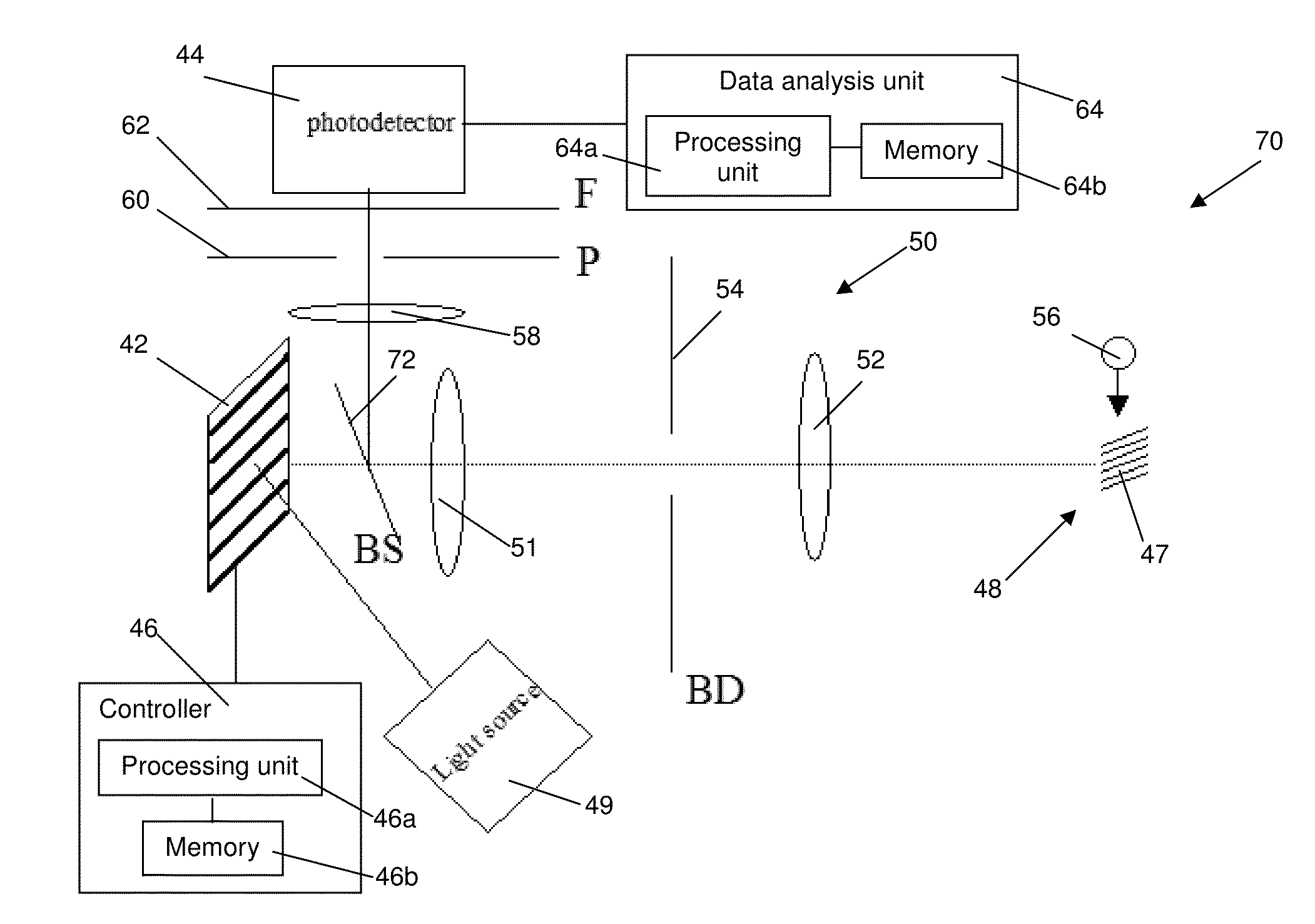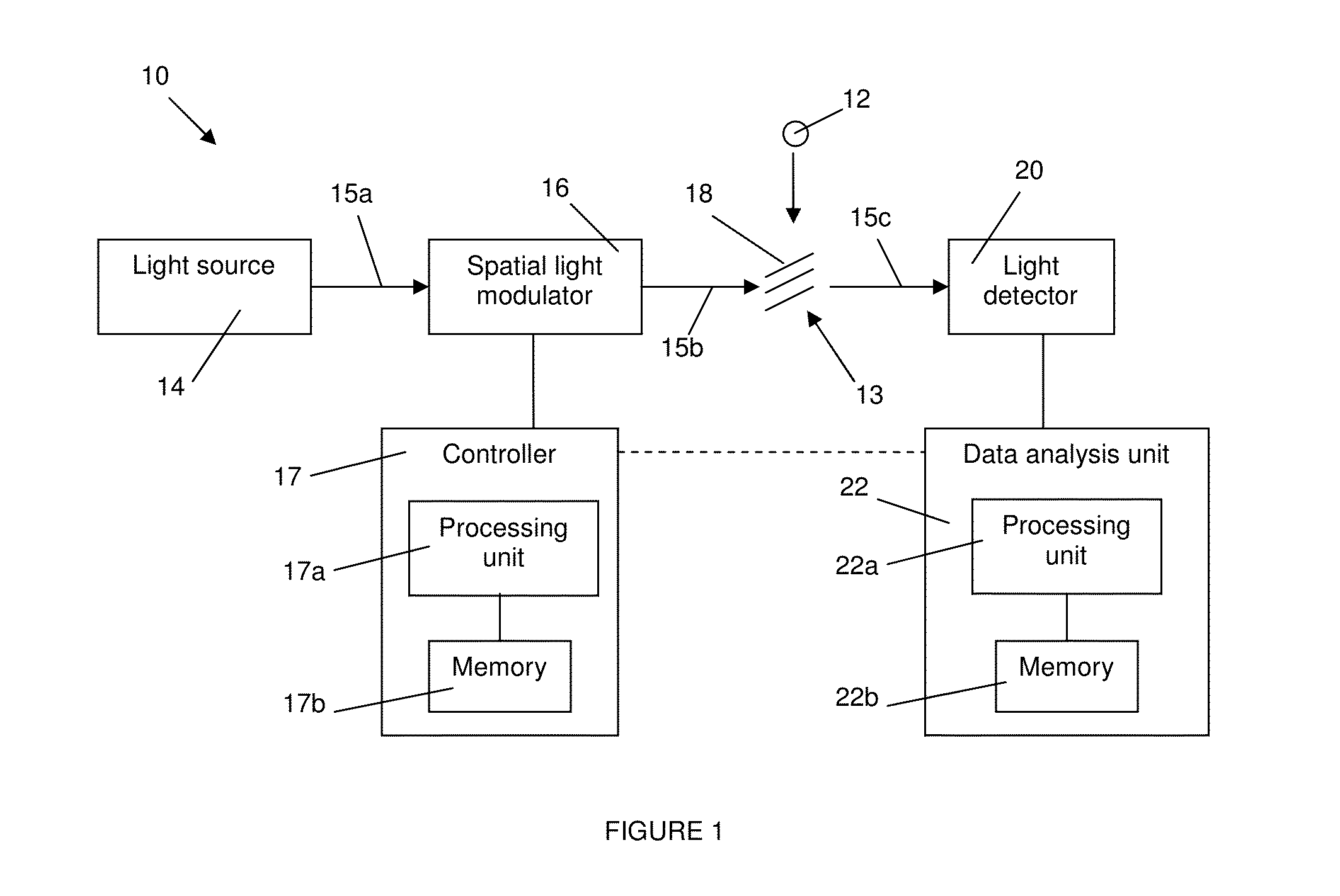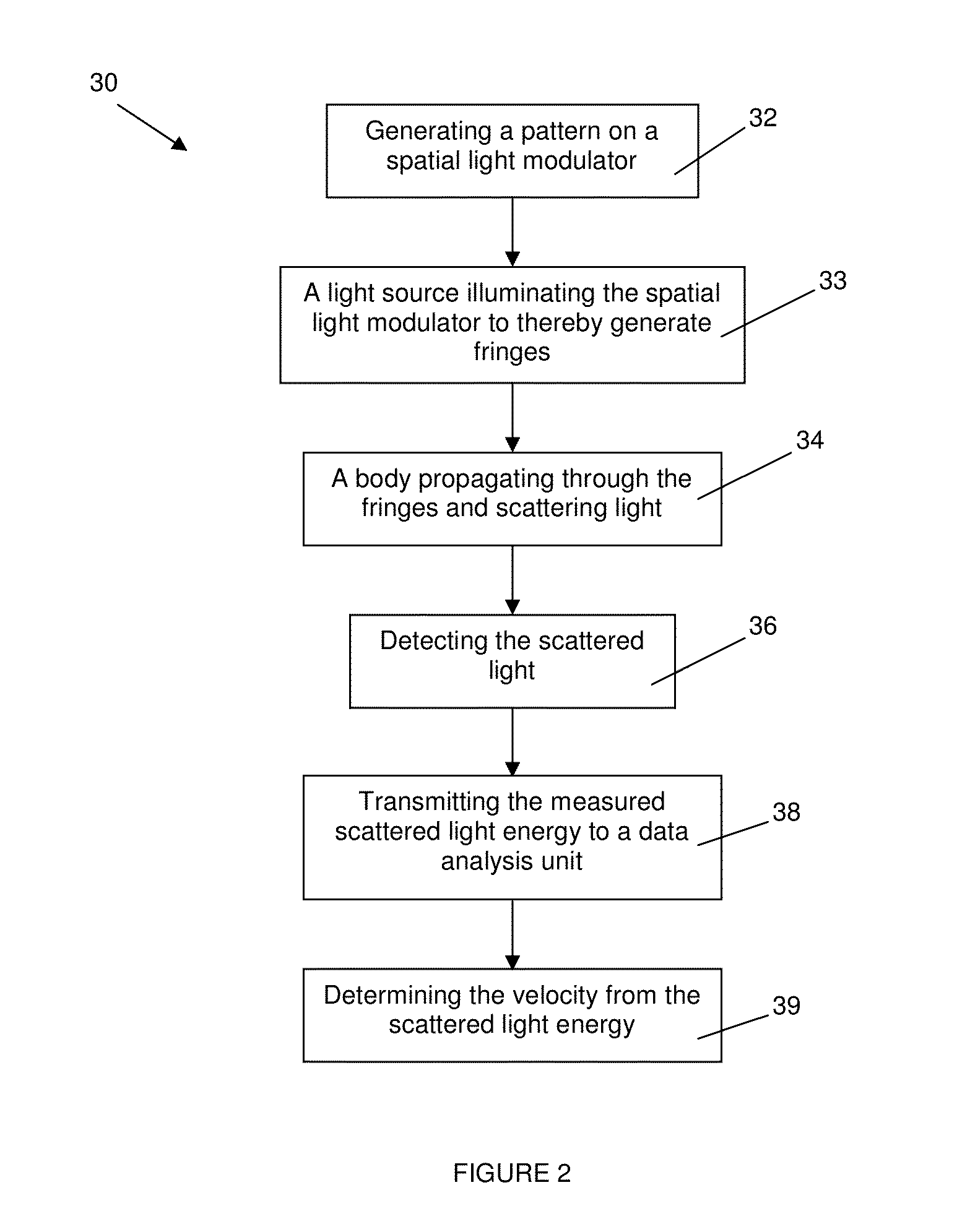Optical Velocimetry Systems and Methods for Determining the Velocity of a Body Using Fringes Generated by a Spatial Light Modulator
a spatial light modulator and optical velocity technology, applied in the field of optical velocity systems, can solve the problems of increasing the cost of the ldv system, requiring further optical alignment procedures, and unable to determine the propagation direction of the body through the interference fringes from the measured intensity of scattered ligh
- Summary
- Abstract
- Description
- Claims
- Application Information
AI Technical Summary
Benefits of technology
Problems solved by technology
Method used
Image
Examples
Embodiment Construction
[0109]The description which follows, and the embodiments described therein are provided by way of illustration of an example, or examples of particular embodiments of principles and aspects of the present invention. These examples are provided for the purposes of explanation and not of limitation, of those principles of the invention. In the description that follows, like parts are marked throughout the specification and the drawings with the same respective reference numerals.
[0110]Referring to FIG. 1, there is shown conceptually the main components of a velocimetry system 10 for determining the velocity of a body 12 passing through a measurement chamber or volume 13 (also known as an interrogation area or region). The measurement volume 13 may have a variety of shapes (e.g. ellipsoid or cuboid). The body 12 may be a particle (for instance, a smoke particle, or a particle entrained in a fluid), the surface of a moving body, a droplet, a microscopic object or the like. Moreover, the...
PUM
 Login to View More
Login to View More Abstract
Description
Claims
Application Information
 Login to View More
Login to View More - R&D
- Intellectual Property
- Life Sciences
- Materials
- Tech Scout
- Unparalleled Data Quality
- Higher Quality Content
- 60% Fewer Hallucinations
Browse by: Latest US Patents, China's latest patents, Technical Efficacy Thesaurus, Application Domain, Technology Topic, Popular Technical Reports.
© 2025 PatSnap. All rights reserved.Legal|Privacy policy|Modern Slavery Act Transparency Statement|Sitemap|About US| Contact US: help@patsnap.com



